Nguyen Ngoc Bich: Difference between revisions
Loc Vu-Quoc (talk | contribs) (→Ho Chi Minh: para 2, 3) |
Loc Vu-Quoc (talk | contribs) (→Ho Chi Minh: para 1) |
||
| Line 154: | Line 154: | ||
--> | --> | ||
[[File:Ho Chi Minh, Giap, farewell to OSS team 1945.png|200px|thumb|right|[[Ho Chi Minh]] and [[Vo Nguyen Giap]] giving a farewell party to the US Army intelligence Deer Team<!--{{efn|name=OSS-HCM}}--> ([[Office_of_Strategic_Services|OSS]]),<sup>[[#HCM and OSS |N.hos]]</sup><span id="HCM and OSS jump"></span> 1945.]] | [[File:Ho Chi Minh, Giap, farewell to OSS team 1945.png|200px|thumb|right|[[Ho Chi Minh]] and [[Vo Nguyen Giap]] giving a farewell party to the US Army intelligence Deer Team<!--{{efn|name=OSS-HCM}}--> ([[Office_of_Strategic_Services|OSS]]),<sup>[[#HCM and OSS |N.hos]]</sup><span id="HCM and OSS jump"></span> 1945.]] | ||
For thirty years, from 1912 when [[Ho Chi Minh]] first visited Boston and New York City until about 1948-1949, Ho held out his hope that the US would provide military support for his anticolonialist resistance against the French.<ref name="Logevall.2012"/><sup>:xxii</sup><!--{{sfn|Logevall|2012|p=xxii}}--> | For thirty years, from 1912 when [[Wikipedia:Ho Chi Minh|Ho Chi Minh]] first visited Boston and New York City until about 1948-1949, Ho held out his hope that the US would provide military support for his anticolonialist resistance against the French.<ref name="Logevall.2012"/><sup>:xxii</sup><!--{{sfn|Logevall|2012|p=xxii}}--> | ||
Since that visit to the US in his early twenties, [[Ho Chi Minh|Ho]]---like | Since that visit to the US in his early twenties, [[Wikipedia:Ho Chi Minh|Ho]]---like Bich, a Francophile anticolonialist,<sup>[[#Francophile anticolonialists|N.fa2]]</sup><span id="Francophile anticolonialists jump2"></span> <sup>[[#Primary sources, quotations|N.psq3]]</sup><span id="Primary sources, quotations jump3"></span><!--{{efn|name=quotations-VQL}}--> who was both a communist and a nationalist<sup>[[#Ho communist nationalist|N.hcn]]</sup><span id="Ho communist nationalist jump"></span> <!--{{efn|"For many decades there would be a heated debate among diplomats, politicians and political scientists in every corner of the world as to whether [[Ho Chi Minh]] was a communist or a nationalist. The answer is that he was both."{{sfn|Tønnesson|1991|p=120}} }}--> ---developed a "lifelong admiration for Americans".<ref name=Langguth.2000/><sup>:55</sup><!--{{sfn|Langguth|2000|p=55}}--> <sup>[[#Ho admires Americans|N.haa]]</sup><span id="Ho admires Americans jump"></span><!--{{efn|As cited in Logevall (2012),{{sfn|Logevall|2012|p=721}} Note 22, p. 721.}}--> | ||
Seizing on the opportunity of the Japanese entering Tonkin in 1940 September<ref name=Patti.1980/><sup>:452</sup><!--{{sfn|Patti|1980|p=452}}--> to begin occupy Indochina (with French agreement)<ref name=Patti.1980/><sup>:452</sup><!--{{sfn|Patti|1980|p=452}}--> to rid Vietnam of French colonial yoke,<sup>[[#Ho insight revolution |N.hir]]</sup><span id="Ho insight revolution jump"></span><!--{{efn|Ho was convinced that with the Japanese occupation of Indochina and "with international events moving fast and Decoux's government isolated from metropolitan France, the potential for revolution in Vietnam was much enhanced."{{sfn|Logevall|2012|p=34}} }}--> [[Wikipedia:Ho Chi Minh|Ho]] (who was in [[Wikipedia:Liuzhou|Liuzhou]], China) returned to the China-Vietnam border and began a "training program for cadres".<ref name=Patti.1980/><sup>:452</sup><!--{{sfn|Patti|1980|p=452}}--> Then on 1941 February 8,<ref name=Patti.1980/><sup>:524</sup><!--{{sfn|Patti|1980|p=524}}--> Ho crossed the border to enter Vietnam for the first time after 30 years away (from 1911 to 1941), and sheltered in cave Cốc Bó<ref name=Brocheux.2007/><sup>:73</sup><!--{{sfn|Brocheux|2007|p=73}}--> near the [[Wikipedia:vi:Pác_Bó|Pác Bó]] hamlet, in the Cao Bằng province, less than a mile from the Chinese border.<ref name="Logevall.2012"/><sup>:34</sup><!--{{sfn|Logevall|2012|p=34}}--> <sup>[[#Devillers incorrect info |N.dii]]</sup><span id="Devillers incorrect info jump"></span><!--{{efn|Devillers (1952) received incorrect information that Ho was in "Tsin Tsi" (Jingxi, Guangxi, China) as he wrote:{{sfn|Devillers|1952|p=97}} "En mai 1941, il réussit à convoquer à Tsin Tsi dans le Kwang Si, à 100 km environ au Nord de Cao Bang, un 'Congrès' (In May 1941, he succeeded in calling for a plenum at Jingxi in the Guangxi province, about 100 km north of the Cao Bang province)." }}--> There [[Wikipedia:Ho Chi Minh|Ho]] convened a plenum in 1941 May, and founded the [[Wikipedia:Viet-Minh|Viet-Minh]], an anticolonialist organization that Bich joined in 1945.<sup>[[#Bich Viet Minh |N.bvm]]</sup><span id="Bich Viet Minh jump"></span> | Seizing on the opportunity of the Japanese entering Tonkin in 1940 September<ref name=Patti.1980/><sup>:452</sup><!--{{sfn|Patti|1980|p=452}}--> to begin occupy Indochina (with French agreement)<ref name=Patti.1980/><sup>:452</sup><!--{{sfn|Patti|1980|p=452}}--> to rid Vietnam of French colonial yoke,<sup>[[#Ho insight revolution |N.hir]]</sup><span id="Ho insight revolution jump"></span><!--{{efn|Ho was convinced that with the Japanese occupation of Indochina and "with international events moving fast and Decoux's government isolated from metropolitan France, the potential for revolution in Vietnam was much enhanced."{{sfn|Logevall|2012|p=34}} }}--> [[Wikipedia:Ho Chi Minh|Ho]] (who was in [[Wikipedia:Liuzhou|Liuzhou]], China) returned to the China-Vietnam border and began a "training program for cadres".<ref name=Patti.1980/><sup>:452</sup><!--{{sfn|Patti|1980|p=452}}--> Then on 1941 February 8,<ref name=Patti.1980/><sup>:524</sup><!--{{sfn|Patti|1980|p=524}}--> Ho crossed the border to enter Vietnam for the first time after 30 years away (from 1911 to 1941), and sheltered in cave Cốc Bó<ref name=Brocheux.2007/><sup>:73</sup><!--{{sfn|Brocheux|2007|p=73}}--> near the [[Wikipedia:vi:Pác_Bó|Pác Bó]] hamlet, in the Cao Bằng province, less than a mile from the Chinese border.<ref name="Logevall.2012"/><sup>:34</sup><!--{{sfn|Logevall|2012|p=34}}--> <sup>[[#Devillers incorrect info |N.dii]]</sup><span id="Devillers incorrect info jump"></span><!--{{efn|Devillers (1952) received incorrect information that Ho was in "Tsin Tsi" (Jingxi, Guangxi, China) as he wrote:{{sfn|Devillers|1952|p=97}} "En mai 1941, il réussit à convoquer à Tsin Tsi dans le Kwang Si, à 100 km environ au Nord de Cao Bang, un 'Congrès' (In May 1941, he succeeded in calling for a plenum at Jingxi in the Guangxi province, about 100 km north of the Cao Bang province)." }}--> There [[Wikipedia:Ho Chi Minh|Ho]] convened a plenum in 1941 May, and founded the [[Wikipedia:Viet-Minh|Viet-Minh]], an anticolonialist organization that Bich joined in 1945.<sup>[[#Bich Viet Minh |N.bvm]]</sup><span id="Bich Viet Minh jump"></span> | ||
Revision as of 18:24, 17 October 2024
By Loc Vu-Quoc (talk) 17:30, 14 October 2024 (CDT) ◉ Started at 08:10, 10 June 2023
Introduction
| Nguyễn Ngọc Bích | |
|---|---|
| Born | 18 May 1911 Bến Tre, Vietnam |
| Died | 4 Dec 1966 Thủ Đức, Vietnam |
| Occupation | *Engineer
|
| Title | Doctor (medical) |
| Known for | Resistance war, politics |
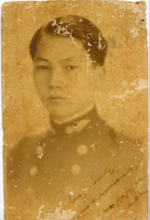

Nguyễn Ngọc Bích (1911–1966) was a French-educated engineer, a Vietnamese "resistance hero" against the French colonists[1]:850. NOTE N.psq1 and "one of the most popular local heroes,"[2]:122 a French-educated medical doctor, an intellectual and politician, who proposed an alternative viewpoint to avoid the high-casualty, high-cost war between North Vietnam and South Vietnam.[3]
The Nguyen-Ngoc-Bich street in the city of Cần Thơ, Vietnam, was named after him to honor and commemorate his feats (of sabotaging bridges to slow down the colonial French-army advances) and heroism (being on the French most-wanted list,[2]:122 imprisoned, subjected to an "intensive and unpleasant interrogation"[2]:122 that left a mark on his forehead,N.bi1 and exiled) during the First Indochina War.
Upon graduating from the École polytechnique (engineering military school under the French Ministry of Armed Forces) and then from the École nationale des ponts et chaussées (civil engineering) in France in 1935,[4] Dr. Bich returned to Vietnam to work for the French colonial government. After World War II, in 1945, he joined the Viet-Minh,N.bvm and became a senior commander in the Vietnamese resistance movement, and insisted on fighting for Vietnam's independence, not for communism.
SuspectingN.bs of being betrayed by the Communist factionN.bs of the Viet-Minh and apprehended by the French forces, he was saved from execution by a campaign for amnesty by his École polytechnique classmates based in Vietnam, mostly high-level officers of the French army,[5]: 299 and was subsequently exiled to France, where he founded with friends and managed the Vietnamese publishing house Minh Tan (in Paris), which published many important works for the Vietnamese literature.N.mbl In parallel, he studied medicine and became a medical doctor. He was highly regarded in Vietnamese politics, and was suggested by the French in 1954 as an alternative to Ngo Dinh Diem as the sixth prime minister of the State of Vietnam under the former Emperor Bao Dai as Head of State,[6]:84 who selected Ngo Dinh Diem as prime minister. While Bich's candidature for the 1961 presidential election in opposition to Diem was, however, declared invalid by the Saigon authorities at the last moment for "technical reasons",[7][4], he was "regarded by many as a possible successor to President Ngo Dinh Diem".[7] N.pi, N.tcq
A large majority of the information in this article came from the master document Nguyen Ngoc Bich (1911–1966): A Biography,[8] which contains even more information, including primary-source evidence and photos, than presented here. Most images in the present article were uploaded for the first time at the time of the writing by the original writer.N.vql
Important historical events that affected Bich's adult life, together with those mentioned in his 1962 paper (e.g., failed agrarian reform, napalm bombs, famine, conquest for rice, etc.) are summarized, in particular the atmosphere in which Bich had lived for ten years working for the French colonialists (from 1935 to 1945), and the historical conditions that drove this French-educated engineer to become a "Francophile anticolonialist"N.fa1, N.psq2 and to join the Viet-Minh in 1945N.bvm (e.g., the French brutal repressions in 1940 and 1945, the power vacuum after the Japanese coup de force in 1945, Ho Chi Minh's call for a general uprising from Tân Trào, the 1945 August Revolution, the Black Sunday on 1945 Sep 2 in Saigon, etc.). The key principle is to summarize a historical event only when it was directly related to Bich's activities. Care is exercised in selecting references and quotations that complement, but not duplicate, other Wikipedia articles at the time of this writing. For example, the history and the general use of napalm bombs, which Bich mentioned in his 1962 article, are not summarized. Regarding the French using American-made napalm bombs in the First Indochina War, well-known battlesN.nb are also not summarized.
First Indochina War
The broader historic events of World War II and the First Indochina War---specifically, the short interwar period between end of the former and the beginning of the later—led to the context in which Nguyen Ngoc Bich fought the French colonists until he was captured. The activities directly or indirectly affected Bich's life by four historic individuals are summarized. French General de Gaulle, by his desire to reconquer Indochina as a French colony, was a main force that led to the First Indochina War, in which Bich fought. Ho Chi Minh, founder and leader of the Viet-Minh, called for the general uprising---against the French colonists and the Japanese occupiers---to which Bich responded. US President Franklin Delano Roosevelt ardent anticolonialism could have prevented the two Indochina wars, and changed the course of history. US President Harry Truman was a reason that the [Wikipedia:First Indochina War|First Indochina War]] is now called the "French-American" War in Vietnamese literature,[9] and through his support for the French war effort supplied napalm bombs, which Bich mentioned in his 1962 paper. The US funded more than 30% of the war cost in 1952 under US President Eisenhouer, and "nearly 80%" in 1954 under Truman.N.fwc
Charles de Gaulle

At the beginning of World War II, in his historic four-minute call-to-arms broadcast from London on 1940 June 18, later known as L'Appel du 18 Juin in French history, the mostly then unknownN.cdg1 General de Gaulle counted on the French Empire, with Indochina as the "Pearl of the Empire", rich in rubber, tin, coal, and rice,[10]:28 to provide resources to fight the Axis, with the support of the British Empire and the powerful industry of the United States. Understanding that Indochina was under the menace of occupation by the Japanese, de Gaulle harbored the dream of wresting this colony back into the fold of the French Empire, writing in his memoirs "As I saw her move away into the mist, I swore to myself that I would one day bring her back."[10]:25 N.dgd
On 1945 Mar 13, four days after the Japanese coup de force in Indochina (Mar 9), de Gaulle summoned US ambassador to France Jefferson Caffery[11] to complain that the French army fighting in Indochina requested help from the US military authorities in China---headed by US General Wedemeyer[12] [13]:66 who followed closely the instructions of US President Roosevelt[13]:67---but was told that "under instructions no aid could be sent."[11] De Gaulle then played the Cold-War card, telling Caffery that France would fall into the sphere of influence of the USSR if the US did not support France to retake Indochina:[14]:243
De Gaulle to Caffery, 1945 March ❝ Do you [the US] want us [France] to become... one of the federated states under the Russian aegis? The Russians are advancing apace. . . When Germany falls they will be upon us. If the public here comes to realize that you are against us in Indochina there will be terrific disappointment and nobody knows to what that will lead. We do not want to become Communist; we do not want to fall into the Russian orbit; but I hope that you do not push us into it. ❞ --- De Gaulle to Jefferson Caffery, US Ambassador to France, 1945 March[15]:289
"Within two weeks" of the death of US President Franklin Delano Roosevelt on 1945 Apr 12, de Gaulle pressured Harry Truman on the Indochina issue, and his government launched "an intensive propaganda effort to mold world opinion in favor of the status quo (French control) in Indochina",[16]:116 and this after having approved the Japanese occupation of Indochina since 1940 September 22.[16]:452 By the time General de GaulleN.cdg2 came to the US in 1945 Aug (inset photo) to campaign for US military aid from then US President Harry Truman, the "French had been forced to drown several Vietnamese uprisings in blood. They had seen the colonial economy completely disrupted. They had been humiliated by the Germans in Europe and incarcerated by the Japanese in Indochina. Even to begin to reassert sovereignty in Indochina, the French were forced to go hat in hand to the Americans (see inset photo, de Gaulle visited Truman), British, and Chinese."[17]:413
To restore French rule over Indochina, on 1945 Jun 7, as Chairman of the French Provisional Government (formed in 1944 Aug after the liberation of Paris), General de Gaulle appointed General Leclerc to establish and to command the French Expeditionary Corps.[18]:321-2 N.laa Even though Eisenhower headquarters recommended against Leclerc’s appointment in favor of General Carpentier,[19]:397 they did not follow up with this objection since the focus was on defeating Japan, but did inform the French that it would take several months to equip the French divisions.[18]:322 De Gaulle also appointed Admiral Thierry d’Argenlieu as High Commissioner of Indochina, the "French Rasputin"[16]:382 N.dar who later played a key role in sowing the seeds of the First Indochina War.
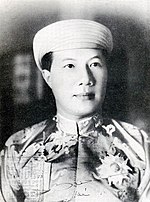
De Gaulle was a prime mover leading to the First Indochina War in which the French-educated Bich fought on the Viet-Minh side against the French colonialists. On 1945 Aug 20, just ten days before he abdicated on 1945 Aug 30,N.bda Vietnam Emperor Bao Dai sent a moving plea to de Gaulle:N.bdq
Bao Dai to de Gaulle, 1945 Aug 20 ❝ I beg you to understand that the only means of safeguarding French interests and the spiritual influence of France in Indochina is to recognize the independence of Vietnam unreservedly and to renounce any idea of reestablishing French sovereignty or rule here in any form. . . . Even if you were to reestablish the French administration here, it would not be obeyed, and each village would be a nest of resistance. . . . We would be able to understand each other so easily and become friends if you would stop hoping to become our masters again. ❞ --- Bao Dai, message to de Gaulle on 1945 Aug 20[20]:xiii–xiv
Just a few days later on 1945 Aug 26 (or very shortly thereafter), Ho Chi Minh put the resistance in much stronger terms to US OSS Major Archimedes Patti, who still remembered vividly after some 35 years:N.hcm1

Ho Chi Minh to Archimedes Patti, 1945 Aug 26 ❝ If the French intended to return to Viet Nam as imperialists to exploit, to maim and kill my people, [I] could assure them and the world that Viet Nam from north to south would be reduced to ashes, even if it meant the life of every man, woman, and child, and that [my] government's policy would be one of scorched earth to the end. ❞ --- Ho Chi Minh to OSS Maj. Archimedes Patti[16]:4
The Southeast Asia and Buddhism expert Paul Mus, who first met Ho Chi Minh in 1945, recounted that Ho Chi Minh said[21] then:N.ytp1
Ho Chi Minh to Paul Mus, 1945 ❝ I have no army, no diplomacy, no finances, no industry, no public works. All I have is hatred, and I will not disarm it until I feel I can trust you [the French]. ❞ --- Ho Chi Minh, according to Paul Mus, the New York Times 1969 obituary[21]
Paul Mus added "For every time Ho Chi Minh has trusted us, we betrayed him."N.ytp2
Ho Chi Minh
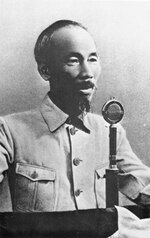

For thirty years, from 1912 when Ho Chi Minh first visited Boston and New York City until about 1948-1949, Ho held out his hope that the US would provide military support for his anticolonialist resistance against the French.[10]:xxii Since that visit to the US in his early twenties, Ho---like Bich, a Francophile anticolonialist,N.fa2 N.psq3 who was both a communist and a nationalistN.hcn ---developed a "lifelong admiration for Americans".[6]:55 N.haa
Seizing on the opportunity of the Japanese entering Tonkin in 1940 September[16]:452 to begin occupy Indochina (with French agreement)[16]:452 to rid Vietnam of French colonial yoke,N.hir Ho (who was in Liuzhou, China) returned to the China-Vietnam border and began a "training program for cadres".[16]:452 Then on 1941 February 8,[16]:524 Ho crossed the border to enter Vietnam for the first time after 30 years away (from 1911 to 1941), and sheltered in cave Cốc Bó[22]:73 near the Pác Bó hamlet, in the Cao Bằng province, less than a mile from the Chinese border.[10]:34 N.dii There Ho convened a plenum in 1941 May, and founded the Viet-Minh, an anticolonialist organization that Bich joined in 1945.N.bvm
On 1941 Sep 8, two months after the total integration of Indochina into the Japanese military system, Ho (still known as Nguyen Ai Quoc at that time) in his call to arm to the people of Tonkin, announced the formation of the Viet-Minh to "fight the French and Japanese fascism until the total liberation of Vietnam."[23]:97 On 1941 Oct 25, the Viet-Minh published its first manifesto:
| Viet Minh first manifesto, 1941 Oct 25 |
|---|
| ❝ Unification of all social strata, of all revolutionary organizations, of all ethnic minorities. Alliance with all other oppressed peoples of Indochina. Collaboration with all French anti-fascist groups. One goal: the destruction of colonialism and imperialist fascism. ❞ N.vmm |

In 1942 August, Ho (named "Nguyen Ai Quoc" at that time) crossed the border into China with the intention of attracting the interest of the Allies in Chungking[16]:7 (now Chongqing) for the Vietnamese resistance movement, arrested by the Chinese on 1942 August 28 for being "French spy",[16]:525 but the real reason was Ho's political activities, viewed as "Communistic", instead of "nationalistic", by the Chinese (Chiang Kai-shek) and the Allies at Chungking (now Chongqing).[23]:103 N.vnh Ho was detained for thirteen months, starting at the Tienpao prison,[16]:51 N.htp moving through eighteen different prisons,[10]:77 N.vnh2 and ending up at Liuchow[16]:46 (now Liuzhou), from where he was released on 1943 September 10, after changing his name from Nguyen Ai Quoc to Ho Chi Minh.[16]:453 At that time, the name "Nguyen Ai Quoc" was very popular, while hardly any one heard of the new name "Ho Chi Minh".N.naq
Ho Chi Minh returned to Vietnam in 1944 September, after obtaining the authorization from the Chinese authority, Gen. Chang Fa-Kwei (Zhang Fakui (German), Trương Phát Khuê (Vietnamese)) ---who was under "severe pressure from the Japanese Ichigo offensive" to obtain intelligence in Indochina---and after submitting the "Outline of the Plan for the Activities of Entering Vietnam".[18]:134 N.hvn All three protagonists---the French Vichy colonialists, the Japanese occupiers, and the Viet Minh---were deceived by US war plan,N.uwp and expected a US invasion of Indochina.N.uii Such expectation was the main reason[18]:209 that, in 1945 February-March, during an "unusually cold month of February,"[16]:56 N.cf45 Ho once again crossed back into China, and walked from the Pác Bó hamlet to Kunming to meetN.wtk (and to "make friends with"[18]:210) American OSS and OWI (Office of War Information) officers to exchange intelligence.N.hmo [18]:238 Ho's report to the OSS mentioned the Japanese coup de force on the evening of 1945 March 9.[18]:238
In Kunming, Ho requested OSS Lt. Charles FennN.fhh to arrange for a meeting with Gen. Claire Chennault, commander of the Flying Tigers.[16]:58 In the meeting that occurred on 1945 Mar 29, Ho requested a portrait of Chennault, who signed across the bottom "Yours sincerely, Claire L. Chennault".[16]:58 Ho displayed the portrait of Chennault, along with those of Lenin and Mao, in his lodging at Tân Trào as "tangible evidence to convince skeptical Vietnamese nationalists that he had American support".[16]:58 As additional evidence, Ho also possessed six brand-new US Colt .45 pistols in original wrappings that he requested and got from Charles Fenn.[24]:79 [25]:158 This "seemingly insignificant quantity" of arms,N.hgp together with "Chennault's autographed photograph" as evidence, convinced other factions of the primacy of the Viet Minh. Ho's American-backing ruse worked.[16]:58
In Cochin China (the south),N.tcc where Bich lived and worked, Tran Van Giau (Trần Văn Giàu in Vietnamese), a Viet Minh leader and "Ho Chi Minh's trusted friend",[16]:186 on 1945 Aug 22 used Ho's ruse of "American backing for the Viet Minh", to convince other pro-Japanese nationalist groups (Phuc Quoc, Dai Viet, United National Front[16]:524) and religious sects (Cao Dai, Hoa Hao) that they would be outlawed by the invading Allies, and thus should accept the leadership of the Viet Minh, which had strong support of "the Allies with arms, equipment and training".[16]:186
Fearing a US invasion with the French colonialists helping, the Japanese initiated operation Bright Moon (Meigo sakusen), leading to a coup de force on 1945 March 9 to neutralize the French forces and to remove the French colonial administration in Indochina[13]:65 (and thus the status of Bich's job in the French colonial government). The resulting power vacuum[13]:64 following this coup de force changed the political situation, and provided a favorable setting for the Viet Minh takeover of the government.[13]:73 In 1945 April, Ho walked a perilous journey from Pác Bó to Tân Trào, the Viet Minh headquarters in the Liberated Area. There, on 1945 August 16, Ho called for a general uprising to throw out the Japanese occupiers that ultimately led to the August Revolution.N.pvar
Even though being a son of a Cao Dai pope,[26] [4] [27] N.cd Bich joined the Viet Minh in 1945,N.bjvm instead of the Cao Dai force.
After the August Revolution in 1945, the French began to negotiate their return to Tonkin with both the Viet Minh and the Chinese army coming to disarm the defeated Japanese north of the 16th parallel. Ho Chi Minh was weary of the Chinese, who might stay in Vietnam permanently, signed the March 6 [1946] AccordsN.m6a1 N.m6a3 with Jean Sainteny to agree to let the French army under General Leclerc to enter Tonkin. "With French troops arriving in Hanoi on March 18 [1946], Leclerc quickly established cordial relations with Ho Chi Minh."[28]
CBS reporter David Schoenbrun interviewed Ho Chi Minh on 1946 Sep 11, the same day that a telegram was dispatched from the High Commissioner d'Argenlieu to the French Indochina Committee on the arrest of Bich on 1946 Aug 25.:N.bb
CBS Schoenbrun interviewed Ho Chi Minh, 1946 Sep 11 ❝ President Ho, how can you possibly fight a war against the modern French army? You have nothing. You've just told me, what a poor country you are. You don't even have a bank, let alone an army, and guns, and modern weapons, the French planes, tanks, napalm. How can you fight the French? ❝ And he [Ho] said: Oh we have a lot of things that can match the French weapons. Tanks are no good in swamps. And we have swamps in which the French tanks will sink. And we have another secret weapon, it's nationalism. And don't think that a small ragged band cannot fight against a modern army. It will be a war between an elephant and a tiger. If the tiger ever stands still the elephant will crush him and pierce him with his mighty tusks. But the tiger of Indochina is not going to stand still. We're going to hide in our jungles by day and steal out by night. And the tiger will jump on the back of the elephant and tear huge chunks out of his flesh and then jump back into the jungle. And after a while the mighty elephant will bleed to death. ❞
--- CBS reporter David Schoenbrun, Youtube video French involvement in Vietnam & Dien Bien Phu - 1962, time 3:10.[29]
Bich wrote about the French use of American-made napalm bombs; see Section Napalm bombs.
Franklin D. Roosevelt
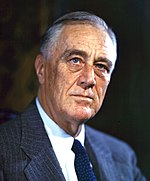
If Franklin D. Roosevelt (FDR) had lived beyond 1945 Apr 12, when he died, he "would have tried to keep France from forcibly reclaiming control of Indochina, and might well have succeeded, thereby changing the flow of history,"[10]:710 meaning the First Indochina War with more than half a million deaths,N.fwc and the Second Indochina War with more than three million deaths,N.awc would be avoided; then Bich would not join the Viet Minh to fight the French colonialists.
Well before World War II, FDR had evolved into a committed anti-colonialist, who wanted "complete independence for all or almost all European colonies",[10]:74 as evidenced by his speech in March 1941:
❝ There has never been, there isn't now, and there never will be, any race of people on earth fit to serve as masters over their fellow men.… We believe that any nationality, no matter how small, has the inherent right to its own nationhood. ❞ ---Franklin D. Roosevelt, address to White House Correspondents' Association, March 1941.[10]:72
Roosevelt's anti-colonialist speech was subsequently encoded in the third point of The Atlantic Charter,N.cac which Churchill was reluctant to agree to, worrying that it would affect the British colonies:N.chac
| The Atlantic Charter, 1941 |
|---|
| ❝ Third, theyN.tac respect the right of all peoples to choose the form of government under which they will live; and they wish to see sovereign rights and self-government restored to those who have been forcibly deprived of them; ❞ |
| ---Franklin D. Roosevelt and Winston Churchill, The Atlantic Charter, August 14, 1941.[30] |
The Atlantic Charter inspired Third-World countries from Algeria to Vietnam in their fight for independence,[30] as Ho Chi Minh often referred to The Atlantic Charter in his letters to US government officials: “the carrying out of the Atlantic and San Francisco Charters implies the eradication of imperialism and all forms of colonial oppression,” wrote Ho Chi Minh to US Secretary of State James F. Byrnes in the Harry S. Truman administration on 1945 Oct 22.[31]:2 N.hac
Harry S. Truman
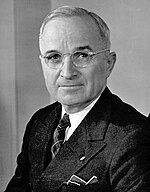
Ellen J. Hammer was the first American-born historianN.vt with a deep knowledge of the French colonial rule in Indochina in the early 1950s during the First Indochina War. Dr. Hammer's[32] N.ejh
highly influential book titled The Struggle for Indochina[33] N.ehb
---published in 1954 well before the United States sent American troops to Vietnam in the 1960s---described the events, politics, and historic personalities leading to the First Indochina War. Her works were considered among the must-read books by respected historians on Vietnam history, as Osborne (1967)[34] wrote: "Indeed, any serious student of Viet-Nam will have either read Devillers,N.pd
Lacouture, Fall, Hammer and Lancaster's[35]
N.dlb
studies already, or will be better served by reading them first hand." To give a historical context within which Bich fought the French colonists, there is no better English source to begin than Dr. Hammer's Vietnam-history book.
The American dilemma (1-To help the French to re-establish its colony in Vietnam or 2-To help free the Vietnamese from the yoke of French colonialism) was described by Hammer as follows:
❝ The United States has entangled itself in a war in a distant corner of Asia in which it resolutely does not want to participate and from which it equally resolutely cannot abstain. It has committed itself to the cause of France [ French Indochina ] and of Bao Dai, but enough of the old spirit of anticolonialism is left to make this a somewhat unsavory commitment: it cannot bring itself wholly to ignore the fact that the free world looks less than free to a people whose country is being fought over by a foreign army. Aware that a lasting peace can be built only on satisfaction of the national aspirations of the Indochinese, the United States must at the same time conciliate a France reluctant to abandon her colonial past. ❞ ---Ellen Hammer (1954), The struggle for Indochina, Preface p. xii.[33]:xii

Under US President Franklin D. Roosevelt, the US policy was to remove the French colonists from Indochina,[36]:57 N.bq1 as the French official Jean Sainteny lamented that he was "face to face with a deliberate Allied maneuver to evict the French from Indochina and that at the present time the Allied attitude is more harmful than that of the Viet-Minh".[36]:68–69 N.bq2
❝ General Wedemeyer's orders not to aid the French came directly from the War Department. Apparently it was American policy then that French Indochina would not be returned to the French. The American government was interested in seeing the French forcibly ejected from Indochina so the problem of postwar separation from their colony would be easier. . . . While American transports in China avoided Indochina, the British flew aerial supply missions for the French all the way from Calcutta, dropping tommy guns, grenades and mortars. ❞ ---Bernard B. Fall (1966), The Two Viet-Nams: A political and military analysis, p.57.[36]:57
- Déjà Vu: 'Americans had different dreams from the French, but followed the same footsteps.' Bernard B. Fall
French Marines wading ashore off the coast of Annam (Central Vietnam) in July 1950, using US-supplied ships, weapons, equipment. Quote by Bernard Fall in gallery title.[10]:702
Resistance
After graduating in 1935 from the École nationale des ponts et chaussées, a civil engineering school, Nguyen Ngoc Bich returned home to work as a civil engineer for the colonial government at the Soc-Trang Irrigation Department until the Japanese coup d'état in Viet Nam (1945 Sep 03). Bich then joined the Resistance in the Soc-Trang base area and was appointed Deputy Commander of the Military Zone 9 (vi), established on 1945 Dec 10, and included the provinces of Cần Thơ, Sóc Trăng, Rạch Giá, together with six other provinces. Bich sabotaged many bridges that were notoriously difficult to destroy such as Cai-Rang Bridge in Can Tho --- where a street was named to honor his feats[37] N.nnbs --- Nhu-Gia Bridge in Soc Trang, etc., blocking the advance of French forces directed by General Valluy and General Nyo, who were under the general command of General Philippe Leclerc, commander of the French Far East Expeditionary Corps (Corps expéditionnaire français en Extrême-Orient, CEFEO).
Between 1946 March 6, when the March 6 Accords were signed,N.m6a3 and 1946 December 19, when most historians used as the date that started the First Indochina War, in Cochinchina, the military situation did not favor the Vietnamese:
❝ Outside Saigon the various nationalist resistance groups, weakened though they were by the months of warfare with the British and French, still controlled large sections of the Cochin Chinese countryside. Ho Chi Minh proposed to General Leclerc the sending of mixed Franco-Vietnamese commissions to establish peace in Cochin China after the signing of the March 6 accord, but the General saw no reason for this in what was supposed to be French territory. When Ho sent his own emissaries to the south, they were arrested by the French who continued to regard Cochin China as a French colony, claiming a free hand there until the referendum could be held. This led to difficult local problems, as in the case of the Vietnamese emissary sent by one Vietnamese zone commander [Nguyen Ngoc Bich] to discuss a cease-fire with the local French commanding officer. The emissary was unceremoniously informed that the French expected complete capitulation—the surrender of arms and prisoners—and that this was an ultimatum. They had until the 31st of March to comply; if they failed to do so, the fighting would begin again. Before the Vietnamese left French headquarters, the French officer took his name and it was soon public knowledge that the French had put a price on his head as well as on that of his commander, Nguyen Ngoc Bich. In this particular region of Cochin China fighting resumed by the end of the month. ❞ ---Ellen Hammer (1954), The struggle for Indochina, pp. 157–158.[33]
Chester L. Cooper was an American diplomat and a key negotiator in many critical agreements in the 1950s and '60s, beginning with his involvement in the Geneva Conference on Indochina in 1954.[38] In his 2005 memoir In the Shadows of History: 50 Years Behind the Scenes of Cold War Diplomacy, "he recounted his association with a constellation of historic figures that included John F. Kennedy, Lyndon B. Johnson, Nikita S. Khrushchev and Ho Chi Minh".[38] N.clc Dr. Cooper N.dcc --- who acquired a deep knowledge of Vietnam history from his years in Asia, from 1941 to 1954, first working for the Office of Strategic ServicesN.hos in China, then for the CIA in 1947, and subsequently became head of the Far East staff of the Office of National Estimates in 1950[39]---devoted some three to four pages to describe Dr. Bich in his Vietnam-history book The Lost Crusade: America in Vietnam, in particular some aspects of Bich's resistance activities:
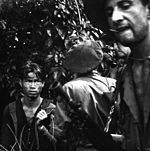
❝ As commander of the Viet Minh forces in the Delta during the late 40s, Bich became one of the most popular local heroes. During 1946 the Viet Minh hierarchy became concerned that Bich might pose a threat to the aims of the Viet Minh in the southern part of Vietnam, and by the end of that year Ho apparently decided that Bich had served his purpose in the Delta. He was "invited" to move North to become a member of the Viet Minh political and military headquarters in Hanoi. Bich was reluctant to leave his command, not only because of his desire to continue the fight against the French, but also because he felt uneasy about leaving his base of power. Nonetheless, he made his way north via the nationalist underground to Hanoi. A day or two before Bich was to report to the Viet Minh headquarters, the French discovered his hiding place near Hanoi. Since he was on the French "most wanted" list, he was subjected to an intensive and unpleasant interrogation. ❞
---Chester L. Cooper (1970), The Lost Crusade: America in Vietnam, p. 122.[2]
Joseph A. Buttinger was an ardent advocate for refugees of persecution, and a "renowned authority on Vietnam and the American war" in that country.[40] In 1940, he helped founded the International Rescue Committee, "a nonprofit organization aiding refugees of political, religious and racial persecution", and while "working with refugees in Vietnam in the 1950s, he became immersed in the history, culture, and politics of that nation".[40] His scholarship was in high demand during the Vietnam War. The New York Times described his his two-volume Vietnam-history book, Vietnam: A Dragon Embattled,[41][1] N.jbr1 as "a monumental work" that "marks a strategic breakthrough in the serious study of Vietnamese politics in America" and as "the most thorough, informative and, over all, the most impressive book on Vietnam yet published in America".[40] Joseph Buttinger wrote in Vietnam: A Dragon Embattled, Vol. 2 that Dr. Bich was "the resistance hero" whom "Diem had no success" to convince to join his cabinet:
❝ Diem left Paris for Saigon on June 24, accompanied by his brother Luyen, by Tran Chanh Thanh, and by Nguyen Van Thoai, a relative of the Ngo family and the only prominent exile willing to join Diem's Cabinet. With others, such as the resistance hero Nguyen Ngoc Bich, Diem had no success. He tried unsuccessfully to win Nguyen Manh Ha, a Catholic who had been Ho Chi Minh's first Minister of Economics but who had parted with the Vietminh in December, 1946. These men, and others too, rejected Diem's concept of government, which clearly aimed at a one-man rule. Nor did they share Diem's illusions about the chances of preventing a Geneva settlement favorable to the Vietminh. Diem apparently believed that the National Army, no longer fighting under the French but for an independent government, would quickly become effective and reduce the gains made by the Vietminh. ❞ ---Joseph Buttinger (1967), Vietnam: A Dragon Embattled, Vol.2, p. 850.N.jbr2
That Nguyen Ngoc Bich was being hunted by the French colonists was described in Joseph Buttinger's book:[41]:641
❝ [Note] 9. Miss Hammer cites the case of an emissary sent by Nguyen Ngoc Bich. The French took down his name when he came to their headquarters to negotiate a cease-fire, and "it was soon public knowledge that the French had put a price on his head as well as on that of his commander, Nguyen Ngoc Bich" (ibid., p. 158). ❞ ---Joseph Buttinger (1967), Vietnam: A Dragon Embattled, Vol.1, p. 641.N.pbh
Napalm bombs
- French use of American-made napalm bombs
French Napalm bomb exploded over Vietminh force. 1953 December. This image during the (French) First Indochina War, conjuring up the horrific destruction of the Napalm on the human flesh,[42] N.ng2 portended what was to come more than ten years later during the (American) Second Indochina War with even more deadly advanced Napalm technology.
On the French use of American-made napalm bombs, Bich wrote that the Viet Minh stopped following the advice of Chinese tacticians in launching large-scale mass attacks once many of their soldiers died by French napalm bombs. They switched from the costlier manufacturing of arms to the less expensive manufacturing of hand grenades, which can be used against light battalions to seize their arms.[3]
Publications
- Nguyen-Ngoc-Bich (March 1962), "Vietnam—An Independent Viewpoint", The China Quarterly 9. Retrieved on 18 Feb 2023, pp. 105–111. See also the contents of Volume 9, which included the articles of many experts on Vietnam history and politics such as Bernard B. Fall, Hoang Van Chi, Phillipe Devillers (see, e.g., his classic 1952 book Histoire du Viet-Nam in Section References and French French Cochinchina, Ref. 40), P. J. Honey, Gérard Tongas (see, e.g, J'ai vécu dans l'Enfer Communiste au Nord Viet-Nam, Debresse, Paris, 1961, reviewed] by P. J. Honey), among others.
Notes
(↑ NOTE) How to create the Note jump-to and jump-back links: The Note link-labels, such as N.bda in superscript, are unique identifiers for the corresponding Notes, with "N" standing for "Note", followed by a period and three or four characters summarizing the Note contents, e.g., "bda" for "Bao Dai abdication," which is the title (in italics) of the Note (jump-to) link N.bda. In front of each Note, the uparrow ↑ preceeding a Note (jump-back) link such as (↑ N.bda) indicates the link to jump back UP to the main text where the jump-to link N.bda appears.
The target of the jump-back link (↑ N.bda) is the HTML anchor with the code <span id="Bao Dai abdication jump"></span> having the anchor name being "Bao Dai abdication jump", without an Anchor_text (or link text, or link label) inside. The code [[#Bao Dai abdication jump|N.bda]] creates the jump-back link (see Help:Link) with label "N.bda" to jump back UP to the main text where the anchor with anchor name "Bao Dai abdication jump" was embedded.
- (↑ N.atr) Alliance transposition: A surprising alliance transposition happened, with rightist resistance fighters turned to the Japanese (just like the French turned to the British), whereas the leftist resistance fighters turned to China and America (just like the French turned to the USSR) ["On pent ainsi, et bien que de tels rapprochements soient très arbitraires, exprimer en termes européens la situation indochinoise : contre l'impérialisme présent (qui est ici la France), les « résistants » de droite (Caodaistes, Hoa Hao, Phuc Quoc, etc.) regardent vers le Japon (comme les nôtres vers les Anglo-Saxons), tandis que les « résistants » de gauche se tournent vers la Chine et l'Amérique, comme les nôtres le faisaient vers l'U.R.S.S. La transposition étonne, mais elle est, à notre avis, exacte."][23]:99
- (↑ N.awc) American War casualties: The Second Indochina War or the Vietnam War, known as the "American War" in Vietnamese literature, led to a "staggering number of deaths, especially among Vietnamese (between three and four million Vietnamese lost their lives), and the utter destruction of much of the country of Vietnam and large portions of Laos and Cambodia."[43]:85 "In 1995 Vietnam released its official estimate of the number of people killed during the Vietnam War: as many as 2,000,000 civilians on both sides and some 1,100,000 North Vietnamese and Viet Cong fighters. The U.S. military has estimated that between 200,000 and 250,000 South Vietnamese soldiers died. The Vietnam Veterans Memorial in Washington, D.C., lists more than 58,300 names of members of the U.S. armed forces who were killed or went missing in action. Among other countries that fought for South Vietnam, South Korea had more than 4,000 dead, Thailand about 350, Australia more than 500, and New Zealand some three dozen."[44]
- (↑ N.p4a) Atlantic Charter, Point 4: "Fourth; they will endeavor, with due respect to their existing obligations, to further the enjoyment by all states, great or small, victor or vanquished, of access on equal terms, to the trade and to the raw materials of the world which are needed for their economic prosperity;"N.cac2
- (↑ N.bda) Bao Dai abdication: Under the pressure of the Viet Minh,[16]:186-187 Bao Dai had decided to abdicate on 1945 Aug 24,[16]:186-187 composed the Imperial Rescript of abdication dated and signed on 1945 Aug 25,[23]:140 and abdicated officially on 1945 Aug 30.[16]:220 Ho Chi Minh then appointed "Mr. Nguyen Vinh Thuy" (Bao Dai's birth name) as "Supreme Counsellor"[16]:220 of the Provisional Government of Vietnam.[16]:220 On 1945 Oct 22, Ho Chi Minh sent a letter to the US Secretary of State James F. Byrnes,[31]:2 and attached the Imperial Rescript of Bao Dai's abdication together with Bao Dai's message to his royal clan about his abdication, both of which were an English translation with no date, but with the recorded date as 1945 Aug 22 in the US National Archives and Records Administration (NARA). The date of 1945 Aug 25 for the Imperial Rescript of Bao Dai's abdication and Bao Dai's message to his royal clan about his abdication, as recorded by historian Devillers (1952)[23]:140 is likely more reliable and correct.
- (↑ N.bdq) Bao Dai quote: In the foreword by Devillers for Tønnesson's 2010 book Vietnam 1946.[20]:xiii-xiv
- (↑ N.bs) Betrayal suspicion: On the betrayal suspicion, Chester Cooper wrote in 1970:[2]:123 "Whether the Viet Minh had actually betrayed him to French agents is not known for certain, but Bich always suspected that this was how he had been discovered," whereas the assertion that Bich "was betrayed by his Communist colleagues to the French" was written in the short biography that accompanied Bich's 1962 article, in Honey, P.J., ed. (March 1962), "Special Issue on Vietnam", The China Quarterly 9. Retrieved on 18 Feb 2023. Volume 9. See the Note on The China Quarterly.
- (↑ N.bb) Bich biography: See primary sources and extensive quotations from secondary sources (history books and articles) in Nguyen Ngoc Bich (1911–1966): A Biography.[8]
- (↑ N.pbh) Bich's head price: See Joseph Buttinger's book, Vol. 1[41] N.jbr3
- (↑ N.bi1, N.bi2) Bich's injury: A photo showing the injury mark on the forefront of Dr. Bich as a result of this "intensive and unpleasant interrogation" can be found in Nguyen Ngoc Bich (1911–1966): A Biography.[8]
- (↑ N.bjvm) Bich joined Viet Minh: See the quotation from a French doctoral thesis in Nguyen Ngoc Bich (1911–1966): A Biography.[8]
- (↑ N.nnbs) Bich street: A street in Can Tho is named Nguyen Ngoc Bich to commemorate him blowing up the Cai-Rang Bridge in this city to stop the French troops advance in 1945–46.[37] The short biography in Vietnamese, together with an English translation, in this street-naming plan is provided in the document Nguyen Ngoc Bich (1911–1966): A Biography,[8]
- (↑ N.bvm) Bich Viet Minh: That Bich joined the Viet Minh in 1945 was mentioned in a French PhD dissertation with page image provided in Nguyen Ngoc Bich (1911-1966): A Biography.[8]
- (↑ N.jbr1, N.jbr2, N.jbr3) Buttinger review: Osborne (1967), a Vietnam scholar, provided a critical review[34] of Joseph Buttinger's two-volume book.[41][1] A recent summary of Joseph Buttinger's book was provided by Stefania Dzhanamova on 2021 Aug 11 on Goodreads.
- (↑ N.cd) Cao Dai: "Appealing largely to the uneducated and essentially superstitious masses, the Cao Dai mushroomed in size to over five hundred thousand by 1930, giving the French authorities cause for concern. A schism took place in 1933 when Pham Cong Tac, one of the original founders, organized a secret sect known as Pham Mon to exploit political objectives. With the death of Pope Le Van Trung in 1936, Tac seized control of the temple at Tay Ninh and proclaimed himself 'interim Pope.' From this point on the Cao Dai split into several distinct sects but retained in all of them a rigid rightist political philosophy, conservative in nature and vehemently anticommunist and promonarchical."[16]:501 [18]:97
- At first, the French colonialists tolerated the Cao Dai, prefering religious sects over Communists, allowing it to be practiced in Cochinchina (south Vietnam), but not in Annam (central Vietnam) and Tonkin (north Vietnam).[18]:98 "In 1940-41, the French altitude changed in Cochinchina loo, since it was realized that the new religion had turned into a pro-Japanese force.[41]:252 Citing messages from above, Caodaist priests predicted the certain victory of the Axis."[18]:98
- In the Spring of 1941, the Caodaistes found themselves in serious difficulty with the French administration, and sought help and protection from the Japanese, who were not in a position to provide. As a result, the Caodaistes were crushed by the French, with Cao Dai leaders sent into exile. By December of 1941, the "famed" Kempeitai, the Japanese political police modeled after the Gestapo, came to Indochina, and provided help and protection to the Caodaistes and other nationalist factions.[23]:89-90 (In Devillers (1952)[23]:90, "Kempeitai" was translated into French as "Gendarmerie" and "police politique", whereas in Patti (1980)[16]:41, "kempeitai" was translated as "security police".)
- After the Japanese coup de force on 1945 Mar 9, being pro-Japanese,[16]:76 [18]:103,373 the Cao Dai sect along with other pro-Japanese groupsN.atr in the United National Front (Mặt Trận Quốc Gia Thống Nhứt),[16]:524 established on 1945 Aug 14,[16]:554 were convinced by Tran Van Giau, a Viet Minh leader in Cochinchina---and later "a prominent Vietnamese historian who organized the 1945 revolution in Saigon and the whole of Cochinchina (Nam Ky)"[18]:21---that they all would be "outlawed"[16]:186 by the invading Allied, agreed to an alliance under the leadership of the Viet Minh.[45] [16]:524
- After the Japanese officially surrendered on 1945 Sep 2, the same day that Ho Chi Minh declared Vietnam Independence, General Leclerc (on 1945 Oct 5)[16]:454 and the French 5th Régiment d'Infanterie Colonial (RIC,[16]:xv Colonial Infantry Regiment, on 1945 Oct 3)[16]:454 were brought back to Cochinchina with the help of the British. The advance units of British troops, the 20th Indian Division, and of the French 5th RIC were flown into Saigon on 1945 Sep 12.[16]:455
- "The contentious character of the nationalist movement in the south facilitated Leclerc's 'pacification campaign' at the end of 1945 and the beginning of 1946. He took on the armies of the Hoa Hao, the Cao Dai, and the Viet Minh one after the other. At first, he seemed to score a resounding military success. Many Caodaists rallied to the French. By March, Leclerc estimated that his troops controlled, not just the cities, but also 80 percent of the villages. Politically, however, France had confronted and alienated much of the population, and when the Viet Minh reorganized its forces and started to cooperate more systematically with the religious sects, guerrilla activity resurfaced in most of the areas the French thought they had pacified."[20]:74
- On 1946 Apr 10, Nguyen Binh, the equivalent of Vo Nguyen Giap in the south,[20]:75 formed the Unified National Front (Mặt Trận Quốc Gia Liên Hiệp, "Front National Unifié"),[23]:253 composed of the Cao Dai and the same former pro-Japanese groups that were in the United National Front, established less than one year before on 1945 Aug 14, as mentioned above.
- The side switching of these groups prompted Ho Chi Minh to describe the pro-Japanese politicians as "weathercocks who were pro-French yesterday, pro-Jap today, and pro someone else tomorrow."[18]:105
- (↑ N.clc) Chester Cooper: A summary of an obituary[38] for Chester L. Cooper is in the document Nguyen Ngoc Bich (1911–1966): A Biography.[8]
- (↑ N.dcc) Cooper, PhD: Chester L. Cooper undertook his doctoral study in urban land economics, and after an interruption due to WWII, received his PhD in 1960.[39]
- (↑ N.tcq) China Quarterly: The Editorial of The China Quarterly, Volume 9, reads: "Five of our articles are by specialists who have observed the Hanoi regime from a distance. M. Tongas and Mr. Hoang Van Chi are writing on the basis of personal experience. Dr. Bich presents an independent view of the whole Vietnamese situation." This China Quarterly issue contained the articles written by several well-known intellectuals on Vietnam history and politics such as Bernard B. Fall, Hoang Van Chi, Phillipe Devillers (See Philippe Devillers (1920–2016), un secret nommé Viêt-Nam, Mémoires d'Indochine, Internet archived 2022.06.29), P. J. Honey, William Kaye (see e.g., A Bowl of Rice Divided: The Economy of North Vietnam, 1962), Gerard Tongas, among others. See the Editorial and the brief introduction of the contributors.
- (↑ N.chac) Churchill, Atlantic Charter: "Both Churchill and many members of his Cabinet were alarmed by the third point of the Charter, which mentions the rights of all peoples to choose their own government. Churchill was concerned that this clause acknowledged the right of colonial subjects to agitate for decolonization, including those in Great Britain’s empire." Churchill wanted to "bind the United States closer to Great Britain," warned his cabinet on 1941 Aug 11 "that it would be “imprudent” to raise unnecessary difficulties. The Cabinet followed Churchill’s recommendation and approved the Charter."[30]
- (↑ N.cf45) Cold February 1945: It has never been that cold. The temperature went down to four degrees Celcius at noon in Hanoi on 1945 Feb 13, Tết, new year day, Lunar year Ất-Dậu ("13-2-1945, Tết Nguyên Đán Ất-Dậu. Chưa bao giờ rét như thế này. Tại Hà Nội, buổi trưa, hàn thử biểu xuống tới 4 độ"[46]:3).
- (↑ N.cac, N.cac2) Complete Atlantic Charter: See the complete Atlantic Charter from the FDR Presidential Library and Museum.
- (↑ N.dar) D'Argenlieu recalled: D'Argenlieu was recalled back to France because of the intense dislike that he caused among the Vietnamese and among the Socialists and Communists in France,[16]:394 who gave him the nickname "The Bloody Monk,"[10]:163 who was "widely believed to have sparked the war with his aggressive actions in 1946, in clear violation of the March 6 Accords [1946] and without informing Paris, [by recognizing] the autonomous 'Republic of Cochin China' in the name of France."[10]:137,180,189 Such recognition went against the stipulation of a referendum for the unification of the three regions ("Kỳ", i.e., Cochinchina, Annam, Tonkin) in the March 6 Accords.N.m6a2 D'Argenlieu was also known as the "abomination of Vietnam,"[16]:394 whom Bao Dai was averse to have any dealings with.
- (↑ N.cdg1, N.cdg2) De Gaulle: The permanent undersecretary at the British Foreign Office knew only that de Gaulle had a 'head like a pineapple and hips like a woman's', whereas the counselor at the US embassy in Paris and most of de Gaulle compatriots never heard of him.[10]:24 By Aug 1946, de Gaulle had resigned from the presidency of the French Provisional Government on 1946 Jan 20.[47]
- (↑ N.dgd) De Gaulle's dream: In 1940-41, in exchange for retaining control over Indochina and Thailand, both the French and the Thai agreed to let the Japanese Navy, Air Force, and Army use, for their military conquest, the harbors, air fields, and terrain in Indochina and Thailand.[18]:81 Meanwhile, in exile in London, De Gaulle later wrote in his war memoirs: "À moi-même, menant une bien petite barque sur l'océan de la guerre, L'Indochine apparaissait alors comme un grand navire désemparé que je ne pourrais secourir avant d'avoir longuement réuni les moyens du sauvetage. Le voyant s'éloigner dans la brume, je me jurais à moi-même de le ramener un jour." Ch. de Gaulle, Mémoires de guerre, Tome I, L'appel. 1940-42. p. 137.[18]:81(n3)
- (↑ N.pd) (Philippe) Devillers: See French Cochinchina, version 03:16, 26 September 2024, Ref.42: Philippe Devillers, Histoire du Viêt-Nam de 1940 à 1952, Seuil, 1952, and Philippe Devillers (1920–2016), un secret nommé Viêt-Nam, Mémoires d'Indochine, Internet archived 2022.06.29.
- (↑ N.dii) Devillers incorrect info: Devillers (1952) received incorrect information that Ho was in "Tsin Tsi" (Jingxi, Guangxi, China) as he wrote:[23]:97 "En mai 1941, il réussit à convoquer à Tsin Tsi dans le Kwang Si, à 100 km environ au Nord de Cao Bang, un 'Congrès' (In May 1941, he succeeded in calling for a plenum at Jingxi in the Guangxi province, about 100 km north of the Cao Bang province)."
- (↑ N.fhh) Fenn helped Ho: OSS Lt. Charles Fenn helped "make Ho Chi Minh the undisputed leader of the Viet Minh in 1945".[25]:96
- (↑ N.fa1, N.fa2) Francophile anticolonialists: "French teachings and models over Confucian ones. Some of these teachings were, to say the least, unhelpful to the colonial enterprise. Voltaire's condemnation of tyranny, Rousseau's embrace of popular sovereignty, and Victor Hugo's advocacy of liberty and defense of workers' uprisings turned some Vietnamese into that curious creature found also elsewhere in the empire: the Francophile anticolonialist."[10]:9
- (↑ N.fwc) French War casualties: The First Indochina War, known as the "French-American War" in Vietnamese literature, resulted in "500,000 on the side of the DRV (Democratic Republic of Vietnam) and 100,000 for the French."[20]:261(n3) See also detailed statistics and sources at First Indochina War: Mass Atrocity Endings, Posted on August 7, 2015 by World Peace Foundation; Internet Archive 2024.06.06.
- (↑ N.fwc) French-war cost: PBS US Involvement in Vietnam Video time 0:11 to 0:32:[48] "In 1952, General Dwight Eisenhower was elected President, in part because he promised to take a tougher stance on communism. That year, American taxpayers were footing more than 30% of the bill for the French war in Vietnam (also called the "French-American" war[9]). Within two years, that number would rise to nearly 80%." To be more precise, the "U.S. aid to the French military effort mounted from $130 million in 1950 to $800 million in 1953."[49]:597 The "United States became France's largest patron, ultimately funding 78 percent of the French war effort in Indochina,"reported historian L.H.T. Nguyen based on the Vietnamese document "Tong ket cuoc khang chien chong thuc dan Phap," Hanoi: Chinh Tri Quoc Gia, 1996.[15]:46
- (↑ N.ehb) Hammer (1954): Ellen Hammer's 1954 book The Struggle for Indochina[33] was "A superb study of the French effort to hold on to Indochina."[50]
- (↑ N.ejh) (Ellen J.) Hammer received her PhD from Columbia University, where she specialized in international relations, with a dissertation on public law and government.[32] A summary of an obituary for Ellen J. Hammer is in the document Nguyen Ngoc Bich (1911–1966): A Biography.[8]
- (↑ N.hos) HCM and OSS: For the relationship between the OSS and Ho Chi Minh during WWII, see the article OSS Deer Team and the book The OSS and Ho Chi Minh.[25]
- (↑ N.haa) Ho admires Americans: As cited in Logevall (2012),[10]:721 Note 22, p. 721: "Former New York Times Saigon correspondent A. J. Langguth, in his fine history of the American war, refers to Ho Chi Minh's 'lifelong admiration for Americans.' "[6]:55
- (↑ N.hac) Ho and Atlantic Charter: In his letter to the US Chairman of Foreign Affairs Association, Ho referred to the Atlantic Charter several times, twice on Page 1 alone: (1) " As a signatory power of the Atlantic and San-Francisco Charters, the United States of America have to be well informed on the real state of affairs", (2) "These principles of international justice and equality of status have been clearly expressed and solemnly proclaimed in point 3 and 4N.p4a of the Atlantic Charter and subsequently reiterated in the San Francisco Charter".[51]
- (↑ N.hcn) Ho, communist or nationalist? "For many decades there would be a heated debate among diplomats, politicians and political scientists in every corner of the world as to whether Ho Chi Minh was a communist or a nationalist. The answer is that he was both."[18]:120
- (↑ N.hgp) Ho gave pistols: That Ho gave the new pistols to his rivals, but not to his own people, testified to his political acumen in rallying his rivals to accept him as the top leader.[52]
- (↑ N.htp) Ho in Tienpao prison: Tienpao in the Wade-Giles transliteration is Tianbao in pinyin. See the analysis in Notes on Vietnam History.[52]
- (↑ N.hvn) Ho in Vietnam 1944: A French report at that time stated: "more than 200 political refugees had passed from China to Tonkin, most of them armed with pistols and daggers (poiguards), and that among them was a certain 'Nguyen Hai Quoc', who had crossed the border under the name of 'Ho Chi Minh'. Nguyen Hai Quoc, a man 'around sixty years old', was 'the probable leader' of the Viet Minh: 'Under Nguyen Hai Quoc's leadership, the new elements coming from Kwangsi have undertaken to reawaken the movement and bring back to their former activities the implacables who had taken refuge in the mountains.' "[18]:118, 208
- (↑ N.hir) Ho's insight for revolution: Ho was convinced that with the Japanese occupation of Indochina and "with international events moving fast and Decoux's government isolated from metropolitan France, the potential for revolution in Vietnam was much enhanced."[10]
- (↑ N.hmo) Ho met OSS: Ho's "mission was probably to obtain information on the development of the war, try to gain Allied recognition for his league and perhaps also secure the Viet Minh a role in a forthcoming invasion". At the same time, Hoang Quoc Viet carried out a similar mission in Kwangsi (now Guangxi) with the Chinese Gen. Chang Fa-kwei, who told him that "I hope we shall soon meet again in Hanoi".[18]:210 See also the PBS interview with Hoang Quoc Viet in 1981.
- (↑ N.dlb) Lancaster book: Donald Lancaster's 1961 book The Emancipation of French Indochina[35] was "The best single book on the history of all Indochina to about 1955".[50]
- (↑ N.laa) Leclerc accepted assignment: Devillers (1952) wrote that Leclerc accepted his assignment on 1945 May 22 to command two French divisions placed under the general command of American forces in the Pacific ("Dès lors, c’est à obtenir la participation française à cet assaut que Paris voue ses efforts. Le 26 mai, le Gouvernement français offre à Washington de mettre à la disposition du Commandement américain dans le Pacifique un Corps d'Armée à deux divisions. Le general Leclerc, chef de la prestigieuse 2ème Division Blindée, le vainqueur de Koufra, de Paris, de Strasbourg et de Berchtesgaden, le plus connu et le plus populaire des chefs militaires français, a accepté le 22 mai d’en prendre le commandement.").
- (↑ N.m6a1, N.m6a2, N.m6a3) March 6 Accords: Point 1 of the March 6 Accords stipulated that the French government recorgnized the Republic of Vietnam as a "Free state" within the French Union, and regarding Cochinchina, a referendum would be organized to unify the three regions of Vietnam, and the French government would ratify the decisions of the voting population ("Le Gouvernement français reconnait la République du Viêt-Nam comme un État libre ayant son governement, son parlement, son armée et ses finances, faisant partie de la Fédération Indochinoise et de l'Union Française. En ce qui concerne la réunion des trois 'Ky', le gouvernement Français s'engage à entériner les décisions prises par la population consultée par référendum").[23]:225
- (↑ N.mbl) Minh Tan book list: A list of important books published by Minh Tan can be found in Nguyen Ngoc Bich (1911–1966): A Biography.
- (↑ N.nb) Napalm battles: See, e.g., the battle of Vinh Yen (1951), the battle of Na San (1952), the battle of Dien Bien Phu (1954), etc.
- (↑ N.ng1, N.ng2) Napalm girl: A photo of the scars on the back and arm of Phan Thị Kim Phúc, the "napalm girl", is given in Stockton (2022).[53]
- (↑ N.bq1, N.bq2) NNB quotations: See more detailed quotations in Nguyen Ngoc Bich (1911–1966): A Biography[8]
- (↑ N.naq) Nguyen Ai Quoc: Hoang Quoc Viet recounted in his 1981 interview with the PBS: "I was sent to the southern part of the country at one point to discuss things with our comrades there. The discussion was very heated and it was very difficult to iron things out. Then I happened to mention the name Ho Chi Minh. These people in the south asked me who Ho Chi Minh was. I told them that he was Nguyen Ai Quoc. They all stood up and clapped and said that as I was a representative sent by Ho Chi Minh then there was no need for any further discussion. This was because at that time there was a feud going on between the so called "Old Viet Minhs" and "New Viet Minhs". But when they heard from me that Ho Chi Minh was indeed Nguyen Ai Quoc, they were all overjoyed, saying that if Nguyen Ai Quoc had returned home to lead the movement then everything would be solved, that there should be unity and solidarity."
- (↑ N.vql) Original creator and writer: Prof. Loc Vu-Quoc, vuquocloc@yahoo.com, Publications, Google Scholar. Wikipedia User:Egm4313.s12.. Citizendium User:Loc Vu-Quoc. See also Nguyen Ngoc Bich on Citizendium.
- (↑ N.pi) Political influence: A direct quote from the brief introduction of the contributors to The China Quarterly, Volume 9, 1962, reads: Dr. Bich's "personal influence upon Cochin Chinese opinion is considerable, and he is regarded by many as a possible successor to President Ngo Dinh Diem".
- (↑ N.pvar) Power vacuum to August Revolution: "In August and September 1945, the white-bearded Ho Chi Minh emerged as the winner of the Indochina game. ... He expected an Allied invasion and prepared himself for assisting the invading forces. Instead he got a power vacuum and a sudden Japanese surrender. This provided him with an occasion more favorable for bloodless revolution than he could ever have imagined. He then proclaimed the republic that would later defeat both France and the United States."[13]:73
- (↑ N.psq1, N.psq2, N.psq3) Primary sources, quotations: See primary sources, extensive notes and quotations in Nguyen Ngoc Bich (1911–1966): A Biography[8] and Notes on Vietnam History.[52]
- (↑ N.tcc) Taberd Cochin China: Jean-Louis Taberd was likely among the first to explain the meaning of "Cochin China" in his 1837 scientific article; see quotation in Notes on Vietnam History.[52]
- (↑ N.tac) "They" in Atlantic Charter: "They" here means FDR and Churchill and their respective governments.[30]
- (↑ N.vt) (Virginia) Thompson was the first British historian with a deep knowledge on French Indochina with her 1937 book French Indo-China (Internet Archive), George Allen & Unwin LTD, London. Also see the review of this book: French Indo-China By Virginia Thompson (New York: Macmillan Company, 1937, pp.516, $5.00), reviewed by H.I. Priestley, The American Historical Review, Volume 43, Issue 4, July 1938, Pages 876–877, https://doi.org/10.1086/ahr/43.4.876
- (↑ N.uii) US invasion of Indochina: The US was the only country among the Allies (British and Chinese) that could invade Indochina; see Chap. 4, Colliding Plans, in Tønnesson (1991).[18]:156
- (↑ N.uwp) US war plan: "... to confuse the Japanese, possibly the French as well, concerning US intentions. Perhaps Roosevelt meant the plan seriously at first, and then changed it into a deceptive operation when he realized that it could not be carried out ... Indochina came to play a similar role in Roosevelt's war against Japan as Norway occupied in Churchill's war against Germany. For a long time, Churchill toyed with the idea of a Norwegian landing as a way of securing the transport route to Russia and bringing Sweden into the war. Then, when his generals and admirals adamantly refused to carry out the project, Norway instead became the focus of elaborate deception and diversion plans, aiming at inducing Hitler to keep as many troops as possible in an irrelevant theatre."[18]:170, 220
- (↑ N.vmm) Viet Minh manifesto: "Union de toutes les couches sociales, de toutes les organisations révolutionnaires, de toutes les minorités ethniques. Alliance avec tous les autres peuples opprimés de l'Indochine. Collaboration avec tous les élements antifascistes français. Un but: la destruction du colonialisme et de l'impérialisme fascistes."[23]:97
- (↑ N.wtk) Walking to Kunming: It takes about two weeks to walk from Pác Bó to Kunming using likely the same road (among several others) undertaken by the invading Mongols in the thirteen century.[54]
- (↑ N.ytp1, N.ytp2) Year of the Pig: In his interview in the 1968 documentary In the Year of the Pig, at the Youtube video time 13:56, Paul Mus recounted: "Ho Chi Minh said [in 1945], 'I have no army.' That's not true now [in 1968]. 'I have no army.' 1945. 'I have no finance. I have no diplomacy. I have no public instruction. I have just hatred and I will not disarm it until you give me confidence in you.' Now this is the thing on which I would insist because it's still alive in his memory, as in mine. For every time Ho Chi Minh has trusted us, we betrayed him."
References
Marr 2013[55],
- ↑ 1.0 1.1 1.2 Buttinger, Joseph (1967b), Vietnam: A Dragon Embattled, Vol.2, Frederik A. Praegers, New York. Retrieved on 25 Feb 2023
- ↑ 2.0 2.1 2.2 2.3 2.4 Cooper, Chester L. (1970), The Lost Crusade: America in Vietnam, Dood, Mead & Company, New York. Retrieved on 7 Mar 2023
- ↑ 3.0 3.1 Nguyen-Ngoc-Bich (March 1962), "Vietnam—An Independent Viewpoint", The China Quarterly 9. Retrieved on 18 Feb 2023, pp. 105–111. See also the contents of Volume 9, which included the articles of many well-known experts on Vietnam history and politics such as Bernard B. Fall, Hoang Van Chi, Phillipe Devillers (see, e.g., his classic 1952 book Histoire du Viet-Nam in Section References and French Cochinchina, Ref. 42), P. J. Honey, Gerard Tongas (see, e.g, J'ai vécu dans l'Enfer Communiste au Nord Viet-Nam, Debresse, Paris, 1961, reviewed] by P. J. Honey), among others.
- ↑ 4.0 4.1 4.2 Nguyen-Ngoc-Chau (2018), Le Temps des Ancêtres: Une famille vietnamienne dans sa traversée du XXe siècle, L'Harmattan, Paris, France. Retrieved on 18 Feb 2023. Preface by historian Pierre Brocheux.
- ↑ Tran-Thi-Lien (2002), Henriette Bui: The narrative of Vietnam's first woman doctor, in Gisele Bousquet and Pierre Brocheux, Viêt Nam Exposé: French Scholarship on Twentieth-Century Vietnamese Society, University of Michigan Press, ISBN 9780472098057, DOI:10.3998/mpub.12124, at 278–309. Google Book (search for "Bui Quang Chieu Ngoc Bich"), accessed 20 May 2023.
- ↑ 6.0 6.1 6.2 Langguth, Arthur John (2000), Our Vietnam: The war, 1954–1975, Simon & Schuster, New York. Retrieved on 14 Mar 2023
- ↑ 7.0 7.1 Honey, P.J., ed. (March 1962), "Special Issue on Vietnam", The China Quarterly 9. Retrieved on 18 Feb 2023.
- ↑ 8.0 8.1 8.2 8.3 8.4 8.5 8.6 8.7 8.8 8.9 Nguyen-Ngoc-Chau & Vu-Quoc-Loc (2023), Nguyen Ngoc Bich (1911–1966): A Biography, Internet Archive. Retrieved on 21 Mar 2023, CC-BY-SA 4.0. (Backup copy.) Much of the information in the present article came from this biography, which also contains many relevant and informative photos not displayed here.
- ↑ 9.0 9.1 Lady Borton (2020), WE NEVER KNEW: Napalm use during Vietnam's French-American War, vietnamnet.vn, May 5.
- ↑ 10.00 10.01 10.02 10.03 10.04 10.05 10.06 10.07 10.08 10.09 10.10 10.11 10.12 10.13 10.14 Logevall, Fredrik (2012), Embers of War: The Fall of an Empire and the Making of America's Vietnam, Random House, New York. Retrieved on 12 Apr 2012, 864 pp. Winner of the 2013 Pulitzer Prize in History: "For a distinguished and appropriately documented book on the history of the United States, Ten thousand dollars ($10,000). A balanced, deeply researched history of how, as French colonial rule faltered, a succession of American leaders moved step by step down a road toward full-blown war" • Winner of the 2013 Francis Parkman Prize from the Society of American Historians • Winner of the 2013 American Library in Paris Book Award • Winner of the Council on Foreign Relations 2013 Gold Medal Arthur Ross Book Award • Finalist for the 2013 Cundill Prize in Historical Literature.
- ↑ 11.0 11.1 Cite error: Invalid
<ref>tag; no text was provided for refs namedCaffery.1945 - ↑ Cite error: Invalid
<ref>tag; no text was provided for refs namedPatti.1981 - ↑ 13.0 13.1 13.2 13.3 13.4 13.5 Tønnesson, Stein (2007), Franklin Roosevelt, Trusteeship and Indochina: A reassessment, The First Vietnam War: Colonial Conflict and the Cold War, Harvard University Press, Massachusetts, at 56-73.
- ↑ Marr, David G. (1995), Vietnam 1945: The Quest for Power, University of California Press, Berkeley. Retrieved on 2024-07-05.
- ↑ 15.0 15.1 The First Vietnam War: Colonial Conflict and the Cold War, Harvard University Press, Massachusetts, 2007.
- ↑ 16.00 16.01 16.02 16.03 16.04 16.05 16.06 16.07 16.08 16.09 16.10 16.11 16.12 16.13 16.14 16.15 16.16 16.17 16.18 16.19 16.20 16.21 16.22 16.23 16.24 16.25 16.26 16.27 16.28 16.29 16.30 16.31 16.32 16.33 16.34 16.35 16.36 16.37 16.38 16.39 Patti, Archimedes (1980), Why Viet Nam? Prelude to America's Albatross, Berkeley: University of California Press, ISBN 978-0520047839
- ↑ Marr, David G. (1984), Vietnamese Tradition on Trial, 1920-1945, University of California Press, Berkeley. Retrieved on 2024-05-05.
- ↑ 18.00 18.01 18.02 18.03 18.04 18.05 18.06 18.07 18.08 18.09 18.10 18.11 18.12 18.13 18.14 18.15 18.16 18.17 18.18 18.19 Tønnesson, Stein (1991), The Vietnamese Revolution of 1945: Roosevelt, Ho Chi Minh and de Gaulle in a world at war, SAGE Publications, London. Retrieved on 2024-05-05. Link to this book at the Norwegian National Library.
- ↑ Cite error: Invalid
<ref>tag; no text was provided for refs namedVigneras.1957 - ↑ 20.0 20.1 20.2 20.3 20.4 Tønnesson, Stein (2010), Vietnam 1946: How the War Began, University of California Press, Berkeley, California. Retrieved on 2024-05-05.
- ↑ 21.0 21.1 "Dr. Paul Mus dies; a Yale professor. Southeast Asia authority also taught in France", New York Times, 16 August 1969.
- ↑ Brocheux, Pierre (2007), Ho Chi Minh: A Biography, translated by Claire Duiker, Cambridge University Press, New York. Retrieved on 2024-05-20.
- ↑ 23.00 23.01 23.02 23.03 23.04 23.05 23.06 23.07 23.08 23.09 23.10 Devillers, Philippe (1952), Histoire du Viêt-Nam de 1940 à 1952, Seuil, Paris. See also Philippe Devillers (1920–2016), un secret nommé Viêt-Nam, Mémoires d'Indochine, Internet archived 2022.06.29. Patti (1980), p.542, wrote about Devillers (1952): "The most accurate French account of the period; barring several omissions and minor inaccuracies generally attributable to his sources and to the lack of American documentation, it is by far one of the more reliable histories."
- ↑ Fenn, Charles (1973), Ho Chi Minh: A Biographical Introduction, Studio Vista, London. Retrieved on 2023-12-27.
- ↑ 25.0 25.1 25.2 Bartholomew-Feis, Dixee (2006), The OSS and Ho Chi Minh: Unexpected Allies in the War against Japan, University Press of Arkansas, Lawrence, Kansas. Retrieved on 2024-05-23.
- ↑ Tram-Huong (2003), Đêm trắng của Đức Giáo Tông (Sleepless Night of the Cao Dai Pope), People's Police Publishing House, Vietnam.
- ↑ Nguyen-Ngoc-Chau (20 Jul 2021), The basic truths on Caodaism, education.edu.
- ↑ Gunn, Geoffrey C. (2013-03-25), "Prelude to the First Indochina War: New Light on the Fontainebleau Conference of July-September 1946 and Aftermath", Southeast Asian Studies Annual Report 54: 19-51.
- ↑ Giniger, Henry (1984-10-14), America Inside Out, Close to Events, book review.
- ↑ 30.0 30.1 30.2 30.3 The Atlantic Conference & Charter, 1941, 1941. Retrieved on 21 Apr 2023.
- ↑ 31.0 31.1 Ho-Chi-Minh (1945-10-22), Letter to US Secretary of State James F. Byrnes. Page 1, Page 2, Page 3.
- ↑ 32.0 32.1 Pace, Eric (2001), Ellen Hammer, 79; Historian Wrote on French in Indochina, Mar 26.
- ↑ 33.0 33.1 33.2 33.3 Hammer, Ellen J. (1954), The Struggle for Indochina, Stanford University Press, Stanford, California. Retrieved on 11 Mar 2023.
- ↑ 34.0 34.1 Osborne, Milton (1967), "Viet-Nam: The Search for Absolutes", International Journal 22 (4): 647–654, DOI:10.2307/40200203. Retrieved on 18 Feb 2023.
- ↑ 35.0 35.1 Lancaster, Donald (1961), The Emancipation of French Indochina, Royal Institute of International Affairs, Oxford University Press, New York; reprinted by Octagon Books, New York, 1975. Retrieved on 11 Mar 2023
- ↑ 36.0 36.1 36.2 Fall, Bernard B. (1966), The Two Viet-Nams: A political and military analysis, Frederick A. Praeger, New York. Retrieved on 4 Oct 2024
- ↑ 37.0 37.1 Street-naming plan in Can Tho, Vietnam, with biographies, Appendix 1, 9 Apr 2019. Retrieved on 15 Mar 2023. Internet archived 2023.02.10.
- ↑ 38.0 38.1 38.2 Fox, Margalit (2005), Chester Cooper, 88, a Player in Diplomacy for Two Decades, Is Dead, Nov 7.
- ↑ 39.0 39.1 Colman, Jonathan (2012), "Lost crusader? Chester L. Cooper and the Vietnam War, 1963–68", Cold War History 12 (3): 429–449, DOI:10.1080/14682745.2011.573147.
- ↑ 40.0 40.1 40.2 Lambert, Bruce (1992), Joseph A. Buttinger, Nazi Fighter And Vietnam Scholar, Dies at 85, Mar 8.
- ↑ 41.0 41.1 41.2 41.3 41.4 Buttinger, Joseph (1967a), Vietnam: A Dragon Embattled, Vol.1, Frederik A. Praegers, New York. Retrieved on 25 Feb 2023
- ↑ Tong, Traci (2018), How the Vietnam War's Napalm Girl found hope after tragedy, The World from PRX, Feb 21. Internet archived on 2023.02.22.
- ↑ Logevall, Fredrik (2001), The Origins of the Vietnam War, Routledge, Taylor & Francis Group, New York.. Retrieved on 2024-07-21
- ↑ How many people died in the Vietnam War?. Retrieved on 30 Mar 2023.
- ↑ Tønnesson, Stein (1985), "The Longest Wars: Indochina 1945-75", Journal of Peace Research 22 (1): 9-29
- ↑ Đoàn-Thêm (1965), Hai Mươi Năm Qua: Việc Từng Ngày, (1945-1964) (The Last Twenty Years: Daily Events (1945-1964)), Xuân Thu (1986?), Los Alamitos, California. Issuu (read only, cannot search). HathiTrust Digital Library (search only, cannot read).
- ↑ Charles de Gaulle (1959-1969), Former Presidents of the Republic, 15 November 2018. Retrieved on 13 Jun 2023. Internet archived on 2023.03.28.
- ↑ US Involvement in Indochina. Retrieved on 2023-12-09, PBS Learning Media, Illinois. Teaching video excerpt from the documentary The Vietnam War, a film by Ken Burns and Lynn Novick.
- ↑ Encyclopedia of American Foreign Policy, vol. 3, Charles Scribner's & Sons, 2002. Retrieved on 2024-05-11.
- ↑ 50.0 50.1 Gettleman, Marvin E. (1967), A Vietnam Bibliography, Assistant Professor of History, Polytechnic Institute of Brooklyn, with the assistance of Sanford L. Silverman, Liberal Arts Bibliographer. The Libraries, Polytechnic Institute of Brooklyn, Oct 19. Internet archived 2022.01.01
- ↑ Ho-Chi-Minh (1945-10-22), Letter to US Chairman of Foreign Affairs Association. Page 1, Page 2, Page 3, Page 4.
- ↑ 52.0 52.1 52.2 52.3 52.4 Vu Quoc Loc (2023a), Notes on Vietnam History, Internet Archive. Retrieved on 27 Jun 2023, CC BY-SA 4.0.
- ↑ Stockton, Richard (2022), The True Story Of Phan Thi Kim Phúc, The 'Napalm Girl', edited by Leah Silverman, Dec 25. Internet archived on 2023.03.31.
- ↑ Vu-Quoc-Loc (2023b), Marco Polo's Caugigu - Phạm Ngũ Lão's Đại Việt - 1285, Internet Archive. Retrieved on 23 Apr 2023, CC BY-SA 4.0.
- ↑ Marr, David G. (2013), Vietnam: State, War, and Revolution (1945-1946), University of California Press, Berkeley.
External links
- Nguyen Ngoc Bich originally created and written by Loc Vu-Quoc (i.e., User:Egm4313.s12) on Wikipedia, where anonymous users can edit.
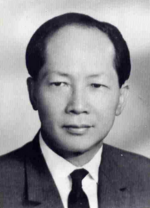
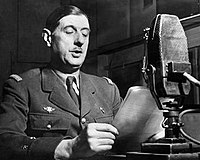

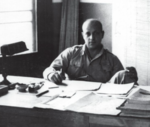

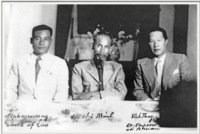

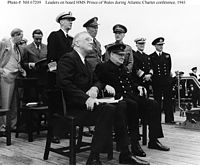
![French Marines wading ashore off the coast of Annam (Central Vietnam) in July 1950, using US-supplied ships, weapons, equipment. Quote by Bernard Fall in gallery title.[10]:702](/wiki/images/thumb/8/86/1stIndochinaWar001.jpg/575px-1stIndochinaWar001.jpg)
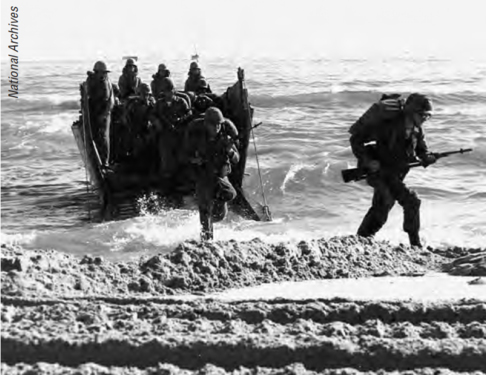

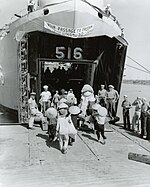

![French Napalm bomb exploded over Vietminh force. 1953 December. This image during the (French) First Indochina War, conjuring up the horrific destruction of the Napalm on the human flesh,[42] N.ng2 portended what was to come more than ten years later during the (American) Second Indochina War with even more deadly advanced Napalm technology.](/wiki/images/thumb/8/81/French_indochina_napalm_1953-12_1.png/675px-French_indochina_napalm_1953-12_1.png)